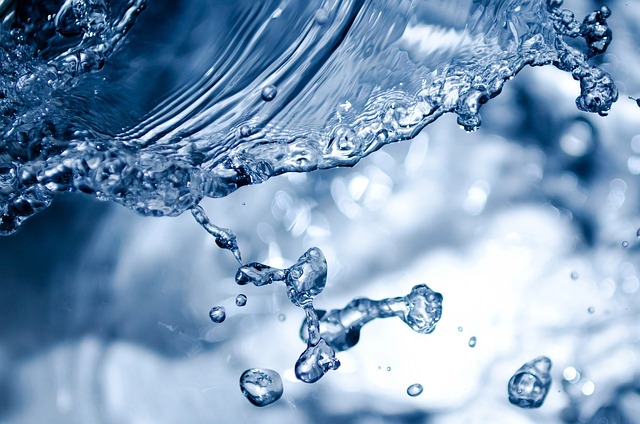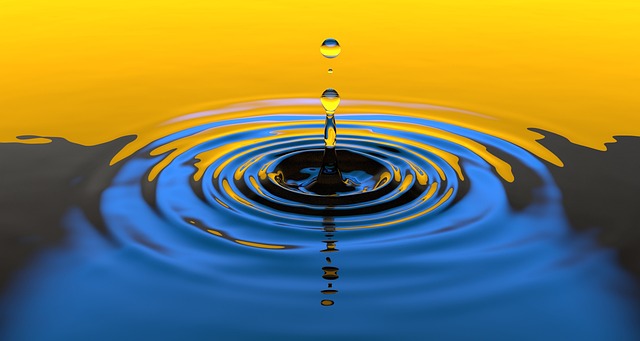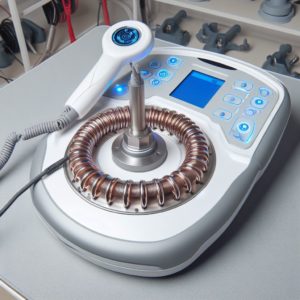Magnetized Water: An Update

Previously, I had written about the research into magnetized water, a type of water produced by exposing water to a magnetic field. While controversial, the amount of research available suggests that water’s properties are significantly affected by magnets. Since writing the article, additional research supports the initial observations, although there may be an ideal magnet strength to maximize the potential health benefits.
How a Magnetic Field Changes Water
Some of the major changes in water’s properties that have been documented from magnetic field exposure include:
- Reduced surface tension (Liu 2021)
- Improved solubility (Sronsry 2021)
- Increased evaporation rate (Chibowski 2018)
- More alkaline pH or decreased acidity (Amor 2018)
- Changes in hydrogen bond strength and water clustering (Wang 2013)
It’s worth noting that other water parameters have been explored as well: see Esmaeilezhad 2017. Most changes induced with a magnetic field return to normal within hours to a few days after exposure (Lindinger 2021).
While there are not many additional human trials since writing the first article, additional research has become available on plants with a review article being published on the effects in animals.
Effects on Plants
Research into the effects of magnetized water on plants has increased over the last few decades. Articles continue to find increased growth, better plant yields and stress or drought resistance from the use of magnetized water for irrigation.
Protection from Salt Contamination
One trial utilized marigold flowers watered with three different varieties of water: saline (salty) water from a well, magnetized saline well water or plain tap water. Saline well water was detrimental to the flowers growth and decreased flowering as compared to tap water. However, when magnetized, saline well water enhanced growth, flowering and survival more so than plain tap water. The authors concluded that magnetized water may be a simple method to reduce the harm to plants from modest amounts of salt contamination (Elhindi 2020).
A similar study applied saline-contaminated water to wheat. Levels of salt present in the water were just above the threshold to cause crop damage. When this saline water was exposed to a magnetic field before watering, wheat plants were thicker and healthier with increased levels of protective enzymes (Guda 2021). The authors concluded that magnetizing water can protect plants from the detrimental effects of salt exposure.
Drought Resistance and Productivity
A trial on moringa tree seedlings found that magnetized water protected seedlings from drought-like conditions. The moringa seedlings were given minimal amounts of water during sprouting. Seedlings provided with magnetized water under drought-like conditions grew larger and longer, with bigger leaves and roots than sprouts watered with control water (Hasan 2020).
Humic acid is a natural plant stimulant, improving plant growth and productivity. One study combined humic acid with and without magnetized water on tomato plants (Helaly 2021). Based on the results, it was concluded that magnetized water can decrease the amount of humic acid applied by one third while still achieving the same results of increased growth and productivity.
A study in artichokes explored different magnetic-field-strength exposure for magnetized irrigation water (Bagherifard 2021). Plant growth and antioxidant properties of plants were assessed. While not all strengths of magnetized water were effective, water produced from exposure to a 6000 gauss magnet produced a surprisingly large increase in antioxidants. The magnetized water increased antioxidant levels by a factor of twenty.

Probably the most interesting aspect of the studies on plants is that there appears to be a magnetic field strength that maximizes the benefits. Some of the data suggests that if the magnet is too strong the effects may start to become less beneficial. While more research is clearly needed, it appears that the best range for plants is a magnet with a strength between 2000 and 6000 gauss.
Effects on Animals
A review from 2021 also summarized the research on using magnetized water in animals (Lindinger 2021). The authors acknowledge the controversial nature of the research, but highlight the number of studies that continue to find effects. The review found both positive and negative effects with magnetized water, mostly from studies in farm animals. On the whole, it appears that the best results occur when using magnets with a field strength between 1000 and 4000 gauss, although not all studies are in full agreement and the quality of the research is still somewhat poor. Benefits included increased growth rate, reduced oxidative stress, improved blood sugar and lipid levels and improved semen quality.
Conclusion
Exposing water to a magnetic field temporarily changes the properties of water. These changes appear to be beneficial for living organisms if the magnetic field strength is in the proper range. Small neodymium magnets can easily produce the strength that appears to be best in the majority of the studies, but more comprehensive research is needed to confirm the findings.
For individuals interested in producing magnetized water, the simplest way to make sure a magnet is the right strength would be to buy a gauss meter. While this would add to the cost of making magnetized water, it would help to guarantee that the water you are producing has a higher chance of being beneficial. Based on the latest research, the reading at the surface of the magnet should be between 1000 and 4000 gauss. While many magnets are sold with specific gauss ratings, there is a fair amount of online fraud around magnet strength. Verification with a meter would help to ensure accuracy.




Hello Dr. Scott,
My name is Esha and I just found your informative articles on magnetized water. I have a small copper pot and I was wondering if I fill that with water and keep the pot on top of a big round magnet and cover the top of the pot as well with a round magnet.
Would that work to generate the magnetic storm?
And should I place north and north facing each other or north and south facing each other?
Thanks so much for all the knowledge you are sharing.
Regards,
Esha
Esha,
I’m not a huge fan of keeping water in copper. If the water is acidic, it could leach some of the metal over time. When I’m treating water, generally I like to expose the water to both magnetic poles, so your bottom magnet and top magnet would be attracted to each other as they treat the water. However, there is no research that verifies both poles are needed for the effects. Most studies only expose the water to one pole and they still show benefits. If using large magnets, you may want to verify their gauss rating, as too strong of magnets may be problematic.